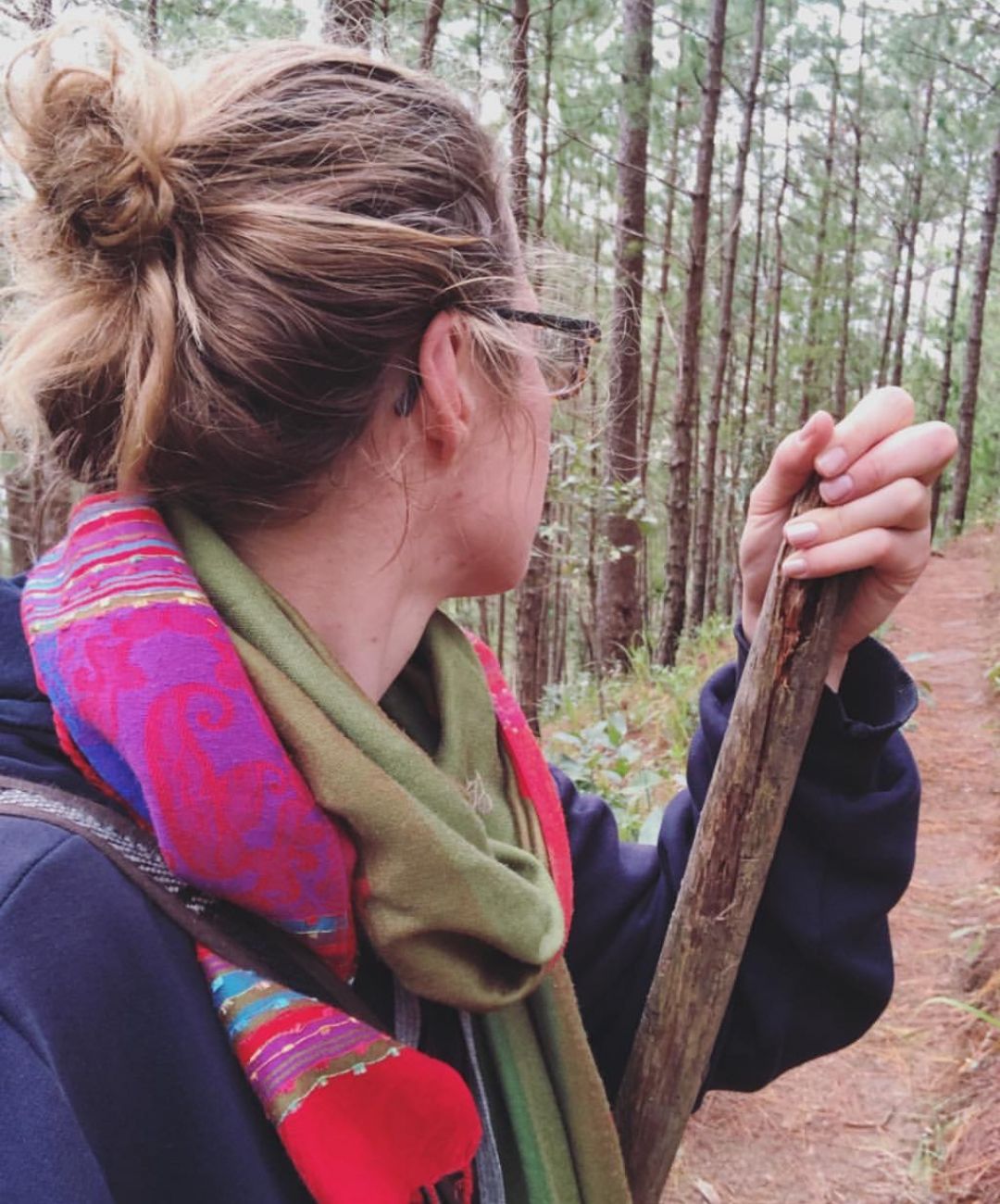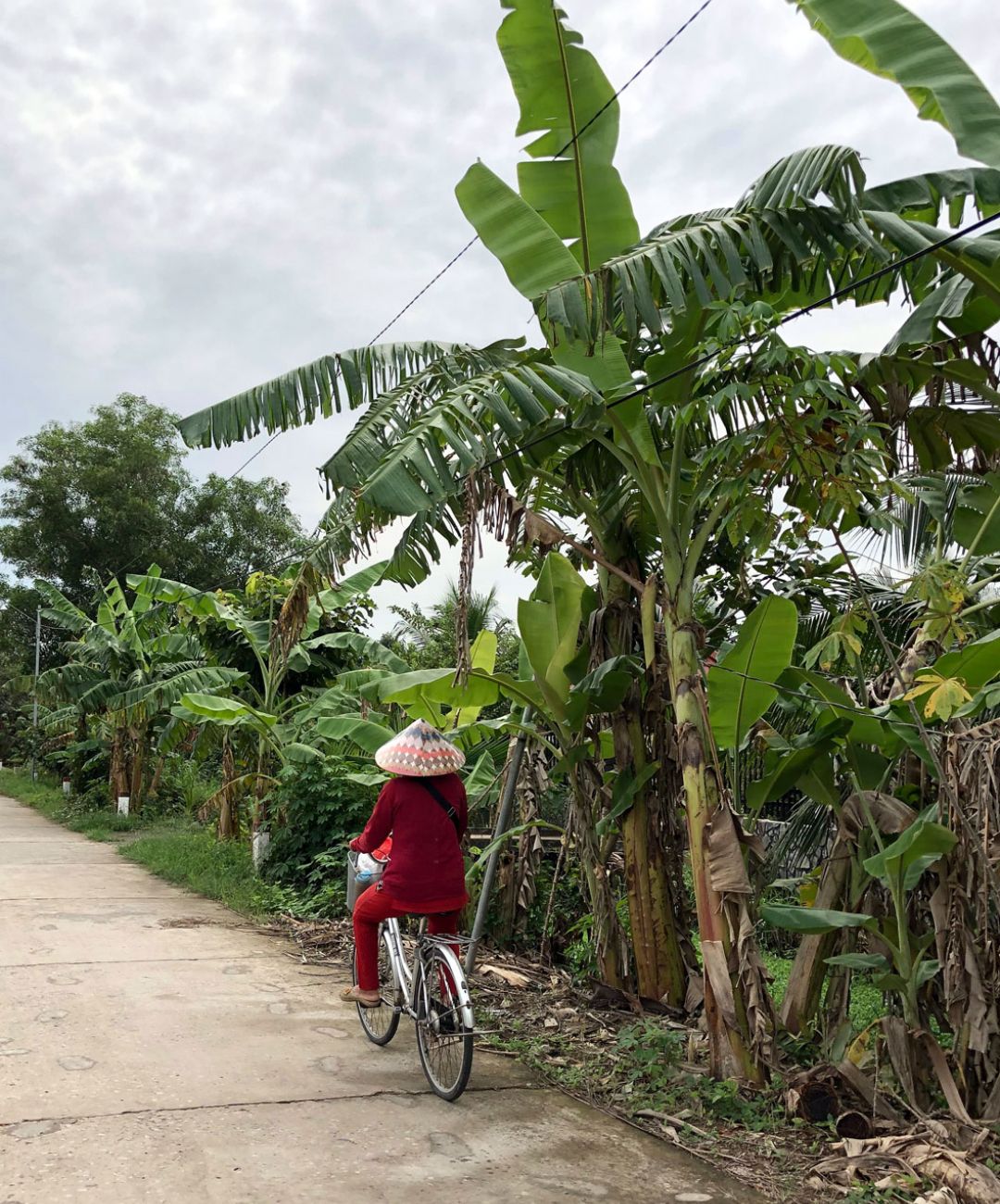That time I was invited to a Thai funeral and to explore a hidden temple community
Getting to know the Wat Nak Klang temple community began with me staying at the local Airbnb and an invitation to a funeral. On this trip I also found out that:
- many ladyboys are excellent Muay Thai fighters and can kick your ass
- why one should become a monk at least once in a lifetime
- how to drink beer in true Thai fashion
I also ended up taking a Muay Thai training class and meeting a three-time Muay Thai World Champion. More on that below, but first, let me tell you about this small Wat Nak Klang Temple district which is mostly unknown to tourists.

Shop Now
If you visit this place don’t expect an ordinary city life experience: there are certain restrictions and regulations on new construction and car traffic, which creates an illusion of staying in a cozy small town rather than a bustling noisy capital with 8 million inhabitants.
Besides the main entrance, which is a gateway for the temple complex itself, the neighborhood is accessed by alleyways which are too narrow for cars so the whole place is very pedestrian-friendly. One side of the area borders a local canal and it limits access as well, so you end up in a cozy and quiet urban pocket.
This neighborhood has everything one might need though: a local restaurant with delicious authentic Thai food and beer, a coffee shop with vintage American vibes, a homemade Ice Cream store, a barbershop, a fruit truck with very reasonable prices and a ready to eat fruit cart with absolutely delicious pineapple which you dip into sweet, salty and spicy mix, and that to me was a gastronomical revelation of its own! Sounds like a simple combo but you will never eat pineapple without it again.

Shop Now
There are two Airbnbs located here. I stayed at Canal Next Door Bangkok, which has a modern interior but a very cozy vibe thanks to rattan and wood decor. I absolutely loved my stay here! The second guesthouse: Canal House Bangkok has a more traditional feel and a terrace overlooking the canal.
I also got an opportunity to drink beer the way Thai people do: you add a couple of ice cubes straight into your glass. At first, it felt a bit weird but I quickly got used to it. I appreciated it even more the next day when I wasn’t as hungover from multiple beers as I usually would be. Drinking beer this way in hot Thai climate makes a lot of sense: it keeps you cool and well hydrated.
If looking for places to eat while visiting the Thai capital, click here for my Top 7 Pad Thai Restaurants in Bangkok.
Wat Nak Klang people created a very supportive tight-knit community. I was invited to cremation of a local man who didn’t have any children or relatives but people from the neighborhood took time to honor him and came to the ceremonies for 4 days in the row and donated the money needed to cover the funeral experiences.
When one local woman’s house caught fire, everyone rushed in to help carry out her belongings and tried pumping water from the nearby canal to extinguish the flames. But the house burned to the ground and so people from the neighborhood chipped in to help her rebuild.
Stories like this made me realize how much more cut off from each other we usually are in the western type of communities and how much more devastating an event like this could seem when you only have yourself to rely on. Interdependence is something we actively avoid in the West but maybe that’s what lead us to epidemic anxiety and loneliness. Just a thought...
People here treasure each other and the small community vibe so whenever property goes on sale here, it is sold to someone from the neighborhood and not to the outsider.
If you visit this place, you will see many boys in orange monk attire, those are Temple kids whose parents sent them here because they are unable to provide for them themselves. Wat Nak Klang Temple takes care of them and educates them.
Monks in general never go hungry in Thailand because people everywhere share food with them even if they don’t have a lot for themselves. This is part of the Buddhist culture. Monks go out barefoot early in the morning around 6-7:30 am and only have to walk a few feet to get food because people are happy to share it in exchange for receiving merit from the monk.
If any of you are considering becoming a monk right now, you should know that monks eat again around 11 am and are not allowed to consume any food after 12 noon. If 90% of you have decided to drop out, the last 10% will follow after I tell you that you are forbidden to have any romantic relationships or even touch members of the opposite sex.
Also, I’ve only met one female monk (while at the Wat Pa Tam Wa monastery in Northern Thailand) but I’m sure there are many more out there, so girls can apply as well, it’s just that I think it might be harder to find a temple that would accept you as most temples are strictly for males.
One of my favorite books ever: “Pure Heart, Enlightened Mind: the Zen journal & letters of Maura "Soshin" O'Halloran” gives an amazing account of what to expect when you join such a temple in a format of a diary of a young Irish-American woman who was one of the first females to seek enlightenment at the Zen Buddhist Temple in Japan. This diary lets you peek into a world which is usually inaccessible to the outsiders. It is nothing short of brilliant and she is considered a saint now in Japan. But I digress...
I once witnessed a very cute street scene: a lady who sells ice cream in Bangkok’s Chinatown stoped a monk who was just passing by and give him ice cream. It was one of the cutest scenes I’ve ever seen: the monk was shy but smiling and so grateful at the same time. I hope it was before noon though.
Another beautiful and interesting scene I witnessed took place next to my Airbnb: a young couple was releasing fish into the canal. Ohm, my guide and a founder of Hidden Bangkok Tours, explained that they bought it at the local market and are releasing it so their wishes would come true.
Ohm also explained that Thai people believe that if you become a monk at least once in your lifetime- your parents are guaranteed to go to heaven, so it is something a good son can do to make his parents super happy and proud. You don’t have to stay a monk your whole life though, you can do it for a week like Ohm and then return to civilian life, but with a bit deeper understanding of Buddhism and life in general.
Mostly people with below middle class incomes live in the Wat Nak Klang community because once someone reaches the middle class, they usually prefer to live in a more modern area with plenty of parking space and 7-elevens on every corner. Also, living on the temple’s property, being “Temple Boys,” carries an image of being poor so people who can afford to move do just that.
It’s mostly older people who stay because that’s the place they lived at their whole lives, that’s where their childhood friends are with whom they can chat about things long gone and they would probably feel miserable in a new place, as changes become harder to adopt to as one gets older. Many younger people who stay in the community, do so to be able to take care of their parents.
There is some middle class still here though, like Ohm who loves this place too much to move away and who wants to help bring the younger generations back and help the locals become more financially secure by participating in the tourist industry.
Most residents here were against the opening of the two guesthouses because they didn’t want loud drunk foreigners roaming the place but they quickly realized there are different types of travelers who do appreciate the local low-key authentic “Sabai Sabai” vibes (same same but different from “tamam tamam” or chill chill vibes) and are not into replicating the Khao San Road experience here.
Staying in neighborhoods like this one is definitely part of traveling sustainably and supporting local communities. This is a great example of voting with your dollar and leaving your money where it would make a big impact on the local economy rather than making Paris Hilton and a few Mariott board members a little bit richer.
Ohm invited me to a funeral and as he puts it: “there’s no better way to get to know another culture and its traditions than to attend one”. And he is right!
And it was not how I imagined it to be at all. In my head the expectation for a Thai funeral was something very colorful, possibly involving an elephant covered in flowers but I think I naively confused it with an Indian wedding or something... in reality, it was a black and white, pretty quiet and short affair.
Although Mr. Pu, whose funeral we attended didn't have any children, people from the neighborhood took
time off from their jobs and came to the ceremonies for 4 days (3 days of chanting and cremation on the 4th) to say a proper goodbye. Everyone donated money to cover the funeral expenses as well, although people in this neighborhood generally don’t have extra funds laying around.
Mr. Pu was left without parents when he was just a kid (his father died in an accident and his mother committed suicide shortly after) so the community helped to bring him up. Before he passed away, Mr. Pu was working as a local tourist guide in this neighborhood for Hidden Bangkok Tours and really enjoyed it: it gave him a sense of pride and purpose and means to make some money after the factory he was working for was closed and he was left without a job. He didn’t speak much English but Ohm made laminated cards that give an account of the local life and so Mr. Pu only had to take tourists from one location to another where they could read those cards on their own.
Only at the funeral we found out from the monks that he was actually 76 because Mr. Pu would always tell people he is 59 :) Seems like a good tactic to adopt once I reach a certain age, 31 perhaps would do since 30’s is the new 20’s.
I was told to wear black or white for the ceremony because these are the colors appropriate for the Thai funeral and not the colorful attire I imagined, maybe mixing it up with an African funeral.
In all, the ceremony took maybe 40 minutes and that's including speaking and chanting done by monks and the cremation itself. After the body is cremated, ashes and the picture of the deceased are placed at the temple so that people could come and pay respect.
The little pouch is a little gift I was given at the end.
Ordinary people go through a 4-day ceremony, richer people can afford to keep the services at the temple going for a week. The last Thai king’s funeral processions took a whole year!
I also learned a lot from Ohm about Muay Thai and took a training class with him at the very famous Petchyindee Gym, which is home to many Muay Thai champions and I got to meet one too! I got to shake hands (more like touch gloves) with Petchmorakot who is a 3X World Muay Thai Champion.
And the reason why many ladyboys got Muay Thai skills, is because most fighters come from the northeastern province, Isan, and some of them happen to be ladyboys. In Isan province (the largest one in Thailand but it got not much going on in terms of tourism), the only way to escape life as a rice farmer or a factory worker, is to become a monk or a Muay Thai fighter. Prizes for Muay Thai champions are given out as cash, so it is the main incentive for boys from low-income families to train hard on an everyday basis and participate in those championship contests. So most kids here train from a very young age and some of them are ladyboys. For anyone interested in exploring this topic a bit deeper, watch “Beautiful Boxer”, a film based on a true story about a Muay Thai champion who also wants to go through a sex-change operation.
You can also become a monk to escape extreme poverty and get free food but let’s face it, being a fighter and having a dream of being a champion seems like a more thrilling destiny and a much more exciting life, especially when you are young.
My Muay Thai training class was a fantastic experience though, about which I will write separately. You can book your own here: Muay Thai Training. Any levels are welcomed and it was my first time actually! I definitely felt like a badass after.
Another interesting thing I found out from Ohm is that most boat owners who take tourists for rides make a decent amount of money but most are deaf from constant engine roars. There are efforts to replace roaring polluting boat engines with electric ones but so far they are not successful. This change would benefit everyone though: the boat operators itself; tourists who would enjoy the surrounding sounds; the environment and people who live along the canal: they have to endure sound pollution on the everyday basis.
But an electric engine costs about $2,000-3,000 and let’s face it, change is scary so most do not even consider it. In a video I was shown on YouTube, you can see the local boat guy very hesitant to try the new engine but after 10 minutes of test driving it, he looks happy and seems to love it.
The potential environmental benefits of these changes could be huge and it could be a beautiful way to contribute to Bangkok’s petroleum-free economy.
Get Here:
Wat Nak Klang is is located within a walking distance from the super popular and very Instagrammable Wat Arun. Some professional Instagrammers actually prefer to stay on this side to get to the temple first during those early morning hours and take magnificent shots without a crowd. It can be easy access by a local ferry until 7 pm, a cab ride or using the brand new subway line.
Stay:
Do:
- Wat Arun
- Muay Thai class
- Hidden Bangkok Foodie Tour
- Visit Kudichin neighborhood which is famous for having 4 religious communities settling in one place: Thai Buddhists, Catholics, Muslims and Taoist Chinese. Read my post about it here: Neighborhood of 4 Religions: Kudichin, Bangkok.
- Take a local ferry (15 Baht) to the Wang Lang Local Market, which almost doesn’t see any tourists so you can find authentic local food and prices not meant for tourists here.
"Thailand was never a European colony, so even though the city is very Western on the surface, deep down it's very Asian. It's quite enigmatic, and I like that. I can't get to the bottom of Bangkok, and I never will."

HELLO, I AM JULES! I’M HERE TO TAKE YOU ON A JOURNEY THROUGH MY ADVENTURES AS A SOLO TRAVELER AND TO INSPIRE YOU TO TAKE THAT TRIP YOU’VE BEEN DAYDREAMING ABOUT.
Subscribe to my mailing list
Made with love by Julia 2021
Design by ubstract



























































